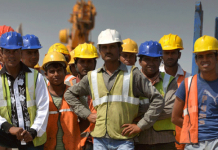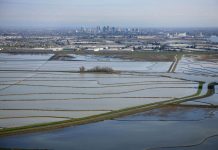This article is written by Souradh C. Valson from Government Law College, Thiruvananthapuram. This article discusses the historical, economic, and socio-political reasons for the Kerala model of development.
Table of Contents
Introduction
Kerala is a small state situated on the southwestern part of the Malabar Coast. It has the 9th largest economy in the country with a Gross State Product (GSP) of Rs. 9.78 lakh crore. The Kerala model is used to define the developmental model of Kerala, it is marked by developments in social indicators like high life expectancy, low infant mortality, quality education, robust healthcare infrastructure, and low birth rate with the help of a fruitful social infrastructure.
A short history of the Kerala model
On October 9, 1970, an economics professor K.N Raj at the request of the then Chief Minister of Kerala, C. Achuta Menon, established the center for development studies in Kerala for teaching, promoting development, and training for development studies.
In 1971, the CSD (Commission on Sustainable Development), with the help of the UN, conducted a study on issues and problems in Kerala. The findings and the recommendations of the study are popularly known as the Kerala model of development. The recommendations emphasized child welfare, educational policies, land reforms, and ways to reduce poverty.
The Kerala model is different from the other developmental models, which solely focus on the growth and attainment of high GDP.
Raj and the Indian economist Amartya Sen convinced the UNDP to conduct work on Human development indicators, which played an influential role in framing the developmental policies. The key features of the Kerala model, such as its land reforms influenced the millennium development goals. The standards of development in Kerala, are identical to many first-world nations with a fraction of their income.
Factors responsible for the development in Kerala
Several factors are responsible for the development of the Kerala economy. The factors are:
Human development
Governmental measures which focused on improving public and private education, improving the healthcare system, and ensuring social welfare helped Kerala to achieve the highest HDI (Human Development Index) of 0.779, the highest in the country. The national HDI stood at 0.645.
Measures that resulted in high HDI
Education to the masses
Kerala’s high literacy rate of 96.2% is the result of an educational system guided by the government with the help of private and aided institutions. Linguistic homogeneity also helps in extending the reach of Kerala’s educational system.
Before independence, the rulers of the princely states of Thiruvithamkoor and Kochi, which later formed the state of Kerala, played an influential role in spreading education to backward castes and females through measures such as monetary assistance to village schools and waiving the fees of female students.
In the 1890s, the male-female literacy ratio was only 5:1, which was way better than the national average of 17:1
The coming of Christian missionaries also helped in the development and expansion of the educational and health systems in Kerala. It also ensured the participation of the untouchables, underprivileged, and made the training of teachers compulsory.
These historical measures helped the state to achieve substantial gender equality in education. More than half of the students enrolled in pre-primary, primary, and lower primary are girls. This proportion is higher in higher classes and undergraduate and postgraduate arts and science colleges. However, there is a deficiency in the participation of women in professional courses.
There is also a strong female presence among the teachers in Kerala. Standing well above the national average, 72.66% of the teachers in the state are females.
Another reason for the development of education is high governmental spending on education. Kerala spends 16.4% of its budget on education and grows at 12.4% every year. The majority of this expenditure goes to school education.
Ensuring the quality of primary education and access to it has helped Kerala to perform well on the economic front.
Healthcare: A system apart
Health care in Kerala is remarkable and is not only better than the rest of the country but also stands apart in the world.
It consists of government, private and cooperative institutions offering a wide range of medical treatments like Ayurveda, Allopathy, Homeopathy, Naturopathy, Siddha, and Unani.
Kerala is also known for its health tourism offering ayurvedic treatments.
The implementation of public food distribution helped to improve the nutritional quality of food and the health of the people. Training programs by the government facilitates upskilling the medical personnel. High literacy rates, especially among women, also contribute to improvement in the healthcare system. Kerala’s healthcare model focuses on social equity and justice.
The government introduced a Comprehensive Health Insurance Scheme for protecting BPL(Below Poverty Line) households from healthcare shocks that might require hospitalization.
Social Welfare
With an extensive system of fair price shops and social expenditure, Kerala has the most advanced social welfare system in the country.
Positive reformation movements based on caste and religion laid down an easy path for the enforcement of social and agrarian reforms. These movements made education and health accessible to the socially backward classes.
In 1975, Kerala established an independent department for social welfare to carry out the social welfare services and programs of the state. Over time, the department was at the forefront of laying out policies for the empowerment of women and weaker sections of the society.
With the three-tier Panchayati Raj System, to reduce the social disparity, the welfare measures are now more accessible to the rural areas.
Kerala State Women Policy, 2009, Women Policy of 1996, State policy for elderly, 2003 are achievements of Kerala’s welfare system.
Public action, socio-religious movements and socio-economic change
The Socio religious developments at the beginning of the 20th Century influenced the socio-economic situation of the state in later years.
These movements, through a system of caste solidarity, reduced the existing caste-based differences in the state. Involvement by members of almost all the castes and religions paved the way for inclusive development.
Organisations such as Sri Narayana Dharma Pariplana Yogam (SNDP) for propagating the teachings of Sri Narayan Guru, Sadhu Jana Paripala Sangham (SJPS), established by Ayyankali, the leader of the pulaya community, Pratyaksha Raksha Daiva Sabha (PRDS) formed under the initiative of the Kumara Guru Devan, and the Kerala Muslim Aikya Sangham) stood for the development, upliftment, and inclusion of the oppressed castes and minorities.
A common feature of all these “mass political movements” was the emphasis on education. Literacy of the masses helped these movements to spread like wildfire. The emergence of the new economic structure like the Public Works Department (PWD), and the plantation economy, at the same time, ensured employment opportunities for people belonging to the lower castes.The introduction of Homestead rights improved the bargaining power of the agricultural laborers, which meant better wages and access to educational opportunities.Although the social reforms were successful, the grievances and the problems of the fishing communities didn’t receive much attention, for this reason, the fishing communities continue with their backward status.
Social Liberalization
A combination of socialism and nationalism with the help of improved literacy and education reinforced the working class and helped raise awareness about the coexistence of human rights and development.
Land reforms such as the conferment of ownership rights to the poor, redistribution of land, and the creation of colonies for Schedule Caste (SC) and Schedule Tribes (ST) ensured the economic freedom of agricultural laborers.
Populism and public demand led the government to enforce social welfare and security measures such as pension schemes for agricultural workers, senior citizens, and physically handicapped and welfare funds for the informal sector, which also ensured economic freedom.
These developments in the socio-economic front helped in a fast demographic transition. Cooperative systems also helped the traditional industries to avail of credit facilities, thereby removing the middlemen.
These initiatives were a success due to adequate backing by a proper legislative framework.
A brief overview of the growth history
There are three phases in the growth of Kerala’s economy:
- Slow growth during the sixties
- Stagnant growth from 1970 to 1980
- High growth
Before independence, Kerala’s economy witnessed an inflow of foreign private capital into plantations such as coffee, pepper, and tea and agricultural processing industries such as the coir mat weaving industry.
In the 1940s, with a proper industrial system, export-oriented goods and the processing industry dominated the markets. Coconut and its products, coffee, tea, and rubber were the products.
After its formation on 1st November 1956, low per capita income, high organisational density, and socio-political activities made development difficult. The first two five-year plans had no impact on the state.
However, from the early 1960s, economic growth started to rise steadily, and the development in manufacturing, services, and agricultural sectors was above the national average.
The growth of SDP from the 1980s comprises of three phases;
(a) 1971-72 to 1986-87
(b) 1987-88 to 2000-01
In the first phase, growth was stagnant, and the other two witnessed high growth in all the sectors.
After the 2000s, development in agriculture and other related industries and the manufacturing industry was poor. However, there was a rapid expansion in construction, electricity, water, and gas supply, communication, real estate, banking, and insurance.
Structural changes in the economy
The NSDP (Net State Domestic Product) of Kerala shows that there was an increase in the growth of the tertiary and secondary sectors. However, there was a reduction in tertiary sectors’ share in the NSDP.
The reason for the growth of the tertiary sector is due to developments in improving human capital. Another factor is the rise of the socio-economic status of the backward classes by their representation in the bureaucracy. The growth is also indicative of the consumeristic mentality of the new generation.
Poor labour relations and other factors led to the decline of the agricultural industry and the simultaneous rise of the tertiary sector to realise the consumer demands.
High incomes resulted in high expenditure, savings, and investments.
Economic reforms
Kerala introduced its first tangible economic reforms in 2001 when it was in a bad fiscal position.
Since then, the state has been attracting global private investments in sectors like tourism, health care, industry, higher education, and IT.
Agricultural sector
Kerala lacks the modern measures to improve the agricultural sector in light of globalisation.
The Biotechnology Policy of 2003, established two biotechnology parks and Agri Export Zone (AEZ) for the export of vegetables and fruits, but it failed to attract biotech companies to Kerala. Lease land farming was an important initiative by Kudumbasree.
Industrial sector
To create a favorable climate for investments in telecommunications, hardware, and software, the Kerala government passed the State Industrial Policy, 2001. The IT Industry Policy of 2001 aimed to transform Kerala as the prime IT destination in India and proposed the construction and establishment of IT park in both the private and government sectors. In 2002, the government constituted the Enterprise Reforms Committee to lay down guidelines for the improvement of the functioning of the State Level Public Enterprises. (SLPE)
Sustainability of the model
A developmental model is sustainable if it:
- Enhances or maintains the citizen’s quality of life.
- Enlarges or maintains the social and economic security of the vulnerable groups.
- Expands or maintains the number of people who utilise and access the production resources for acceptable employment or life with decent wages.
- Decreases the economic or social differences or at least doesn’t increase them.
- Expanding or maintaining the fundamental individual, social, and political rights.
- Preserves or improves natural resources like air, water, fauna, and flora.
For many years, the Kerala Model aligned with these guidelines and conditions. However, the economic stagnation resulted in financial scarcity to sustain the expensive welfare schemes like unemployment relief, public distribution system of food, and pensions.
The underperformance of technology and knowledge-based activities led to the dominance of the service sector in raising economic growth and productivity.
However, the service sector is marked by consumer-oriented work done by low skilled workers with limited connections to other productive sectors.
Another drawback is the rise in environmental problems. High consumption leads to larger utilization of non-renewable resources, thereby producing more waste. The most pressing issues are the ongoing deforestation and paddy conversions, and disturbing the backwater channels.
Excessive use of chemicals in agriculture leads to soil, water, and air pollution. Localized industrial pollution, excessive mining, and destruction of natural flora and fauna is also a cause of worry.
Sustainability is also applicable in the context of the emerging global economy. Radical changes in the existing structure can diminish earlier progress. There is also a new trend of favoring the affluent. Without imposing restrictions on investments, there is a high chance for the outflow of investment from states.
Kerala’s spice market can go down if the government takes away the subsidy protections. It can also affect the cottage industry, leading to unemployment. Hegemony in education, health, and social welfare could pull out the poor and the marginalized.
Conclusion
Kerala Model is deep-rooted in the socio-political history of the state before and after independence, which led to a better social structure, land relations, and development of human capital. Despite its achievements, Kerala lags behind in industry, agriculture, and creating employment. High dependence on the tertiary sector, emigrant income, and a lack of political will with the fear of unsustainability is slowing the growth of the state. A comprehensive policy along with correct implementation will take the state to higher standards of socio-economic growth.
References
- https://shodhganga.inflibnet.ac.in/bitstream/10603/125384/1/kerala%20model%20of%20development%20%EF%BF%BD%20critical%20analysis%20and%20a%20design.pdf
- https://hhbc.in/healthcare-scenario-of-kerala/#:~:text=NIMS%20Hospitals%20Kerala%20(350%20Beds,most%20Healthcare%20Centers%20in%20India.
- https://books.google.com/books?id=lKq5A57tX1cC
- https://books.google.co.in/books?id=__Fbl-UwposC&lpg=PP1&vq=introduction&pg=PA1&redir_esc=y#v=onepage&q&f=false
https://t.me/joinchat/J_0YrBa4IBSHdpuTfQO_sA
Follow us on Instagram and subscribe to our YouTube channel for more amazing legal content.
 Serato DJ Crack 2025Serato DJ PRO Crack
Serato DJ Crack 2025Serato DJ PRO Crack











 Allow notifications
Allow notifications



